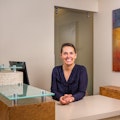Behind the magic of gaining patient trust in the op
Not long ago, we had a young dentist visiting on the day we had a new-patient consult that ended with the patient scheduling a 10-unit veneer case. After the patient left, our visitor asked, stunned, “How did you do that?!” Like levitation in a magic show, it’s not really magic, there’s a method.
Building the initial connection
It all starts with marketing and with the initial contact, which we’ve gone into in previous articles. In this article we’d like to go deeper into several of the important aspects of gaining trust during the new patient visit. First, it’s always important to bear in mind the words of Dr. William J. Mayo of The Mayo Clinic, “The best interest of the patient is the only interest to be considered.” Second, it’s always helpful to take a step back and consider the dental experience from the patient’s perspective.
Prioritizing patient comfort
We, as dentists, are very enthusiastic about all of our amazing technology, equipment, digital workflows, and techniques like implants, single-visit crowns, veneers, sedation, and clear aligners. But if you listen carefully at social gatherings, on TV, in movies, and in stand-up comedy, patients are still focused primarily on the same old thing that they’ve been worried about forever—will it hurt? So that is your clue to success. Gain the patient’s trust by being gentle, comfortable, and painless. But how do you demonstrate to the patient during the first visit that you are all of those things and that you won’t hurt them?
Start in the consultation room. Have a normal getting-to-know-you conversation. Be real, not phony. Don’t be scripted. Be yourself, but be your best self. Demonstrate interest in the patient by asking questions about how things are going with them, then listen. Transition to the dental conversation by bringing up what you memorized from their new-patient forms well before they came in. Important: focus on the chief complaint. “I read on your forms that you have a wedding coming up and you’d like to look your best, but you don’t like your teeth and you're terrified of the dentist after some scary experiences when you were a kid. Is that right?” “I also noticed that you’re allergic to penicillin and latex, and that you’re on Lipitor, correct?” Have this conversation sitting face-to-face with the patient, not looking at a computer, cell phone, clipboard, or anything else. This communicates to the patient that you have really done your homework and that you care. Depending on the patient's personality, these meetings can go on for a little while. Don't rush them, but don't let things drag on too long, either. Most importantly, be your charming, best self.
Easing into the exam
Once you move into the operatory for the clinical exam, you have an excellent opportunity to demonstrate just how gentle and caring you are. Ask permission before you sit them back. Wash your hands in front of them or let them know you are going to wash up. And be mindful that other dentists they have seen may have been less than kind and gentle. Approach the patient gingerly with gentle hands. Don't be in a hurry, and don't rough them up.
Begin with a gentle oral cancer exam. Look under their tongue. Ask them if they have any lumps or bumps they've noticed. Carefully palpate the lymph node chains. Advise them to call their physician if they ever notice anything unusual. Feel around their mouth for tori, palpate the floor of their mouth. Be thorough, but gentle.
Next, examine their TMJs and their muscles of mastication. Ask if their jaw clicks. Feel the TMJs from the outside as they open and close. Feel the TMJs from inside their ears with your pinky fingers, but give them advance notice, "I’m going to put my pinkies in your ears to feel your jaw joint from the inside."
Now is a good time to retract both cheeks and get a cursory look at their bite. Let your assistant know what class bite they have, any attrition, abfractions, etc.
Next, ask them if they get headaches, if they snore, if they have difficulty breathing through their nose, if they have allergies, if they wake up gasping for air, if they still have their tonsils. Then proceed to palpate their muscles of mastication and ask with each muscle "Does this hurt?" Patients absolutely love this and often comment that it doesn’t hurt, but actually feels good. This is perhaps one of the biggest secrets to gaining trust. As you palpate the muscles of mastication for pain, the patient perceives it almost like a massage and it communicates to them your kindness, caring, and gentleness. But this isn’t a gimmick as it is enormously helpful to know if your new patient has chronic muscle pain in any of these muscles. Start with masseter, then the medial pterygoid from the outside, then all three branches of the temporalis. Patients especially like having the anterior temporalis palpated because if it doesn’t hurt, it feels quite good. Move on to the cervicals, the trapezius, the scalenes, and the mylohyoids.
Next have them open wide and say “Ahhhh” so you can get a look at their tonsils and see if they have tonsillar hypertrophy. Don’t gag them! You can then have them open wide and stick out their tongue to classify their airway on the Mallampati score scale.
Now it’s time to palpate the muscles intraorally—the lateral pterygoid, the masseter insertions, and the medial pterygoid to see if anything hurts. Palpate the floor of the mouth for any abnormalities, feel all around for tori and bony exostoses which may indicate a clenching pattern. And talk to your assistant to communicate your findings as you go so your assistant can record your exam.
Next move on to perio screening. Start with a few questions like, “Do you floss your teeth? How often? Do you use an electric toothbrush? How about a water flosser? I’m going to gently check your gums now and be sure to let me know if anything bothers you.” Then proceed to do a gentle perio screening, recording pockets, recession, etc.
Finally, examine their teeth and restorations. Be sure to include positive comments along with any areas that may need restorations. If the patient showed up in a dental office, they’re doing a good job.
Sealing the deal
At this point, it’s time for x-rays, clinical photos, images, scans, etc. All of these diagnostic tools are helpful in diagnosing problems and in building trust. Seeing is believing. And clinical photos are the easiest images for patients to relate to. When you show a patient a fractured, decayed tooth on a 55-inch flat screen, they are just as likely to ask you what to do about the problem as you are to make recommendations.
Most importantly, as you go over the patient’s treatment options, option number one should be the option to do nothing. After all, doing nothing is a legitimate option in most situations, and presenting the option to do nothing takes the pressure off the patient so they don’t feel like they are being subjected to a sales pitch. Just be sure to mention the risks of doing nothing. After the option to do nothing, it is incumbent upon you as a dentist to present all other options with risks, benefits and alternatives, bearing in mind that it is up to the patient to decide what they choose to do or not do with their teeth.
At this point, it is reasonable to ask the patient if they would like a quote for any of the treatment options you have presented. If they don't, then the visit is over, so let just say something like, "Okay, well, you know how to reach us if there is anything we can do for you, and do let us know if you’d like us to send your x-rays to another office. If they say yes, they want a quote, then have your financial coordinator do a quote and present it, along with financing options and insurance information. The financial coordinator then tells the patient that there is no pressure to schedule, that they are welcome to take their time to think about what they would like to do, but if they would like to schedule, you would be more than happy to help them.
Following these steps has been very successful in our practice to help patients get the care that they need or want. The patients feel well cared for and they don’t feel like they're getting a sales pitch. That’s the secret behind the magic!
Editor's note: This article originally appeared in DE Weekend, the newsletter that will elevate your Sunday mornings with practical and innovative practice management and clinical content from experts across the field. Subscribe here.
Josh Bernstein, DDS, is a clinical instructor in cosmetic dentistry, full-mouth reconstruction, and IV sedation, as well as a conscious sedation evaluator for the Dental Board of California. He lectures nationwide and is published nationally and internationally. He and his wife, Allison Bernstein, have a private, fee-for-service, out-of-network practice in Oakland, California, focusing on cosmetic dentistry, sedation dentistry, and Invisalign. Visit dentalsuite903.com for more info.
Allison Bernstein, is a practice management professional with expertise in teaching patient communications to assist dentists and their teams on becoming less dependent on insurance. She and her husband, Josh Bernstein, DDS, host a podcast called Dental Suite 903 and have a Master Class by the same name. They have a private, fee-for-service, out-of-network practice in Oakland, California, focusing on cosmetic dentistry, sedation dentistry, and Invisalign. Visit dentalsuite903.com for more info.
About the Author

Josh Bernstein, DDS
Josh Bernstein, DDS, is a clinical instructor in cosmetic dentistry, full-mouth reconstruction, and IV sedation, as well as a conscious sedation evaluator for the Dental Board of California. He lectures nationwide and is published nationally and internationally. He and his wife, Allison Bernstein, have a private, fee-for-service, out-of-network practice in Oakland, California, focusing on cosmetic dentistry, sedation dentistry, and Invisalign. Visit thriveoutofnetwork.com for more info.

Allison Bernstein
Allison Bernstein, is a practice management professional with expertise in teaching patient communications to assist dentists and their teams on becoming less dependent on insurance. She and her husband, Josh Bernstein, DDS, host a podcast called Dental Suite 903 and have a Master Class by the same name. They have a private, fee-for-service, out-of-network practice in Oakland, California, focusing on cosmetic dentistry, sedation dentistry, and Invisalign. Visit thriveoutofnetwork.com for more info.


